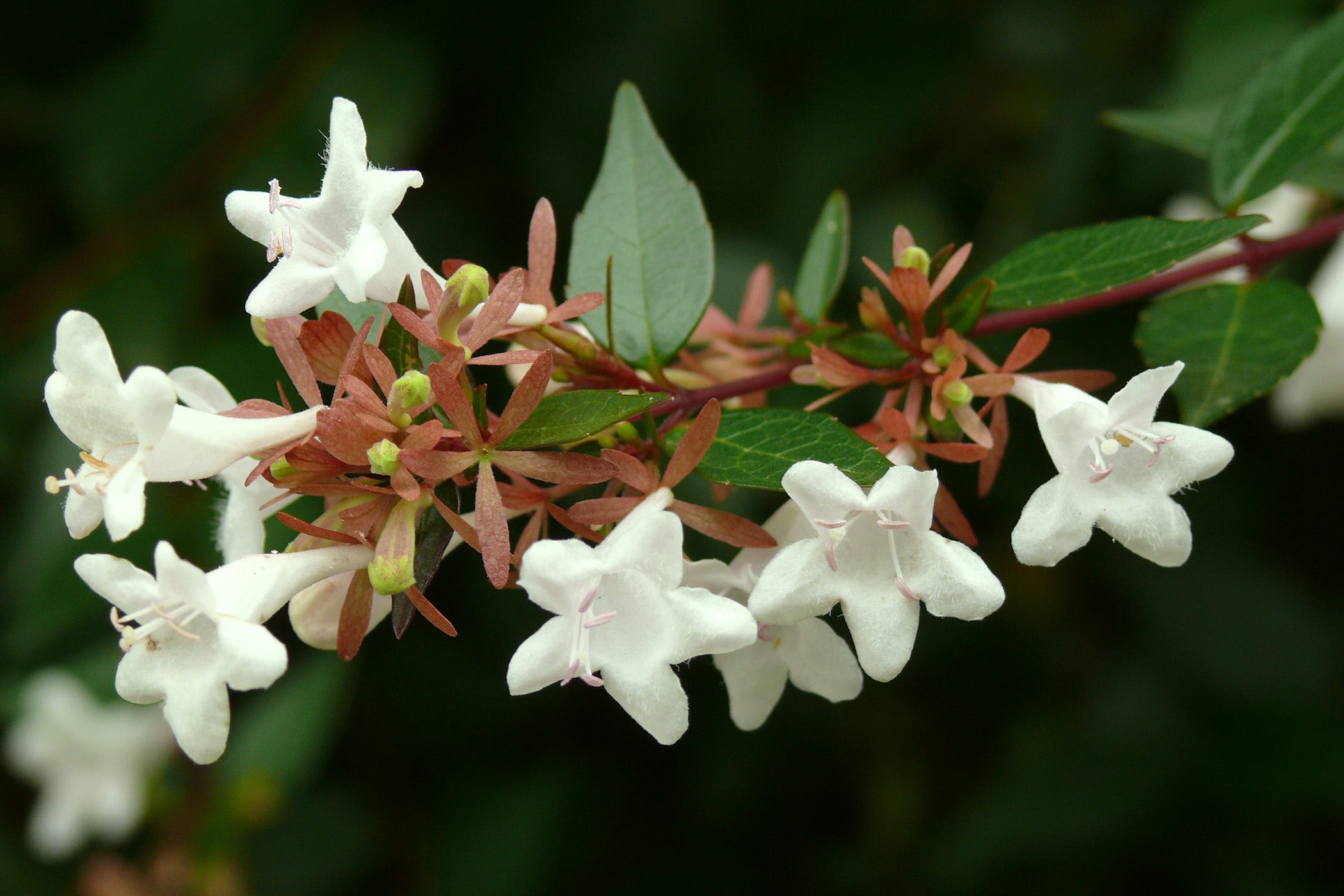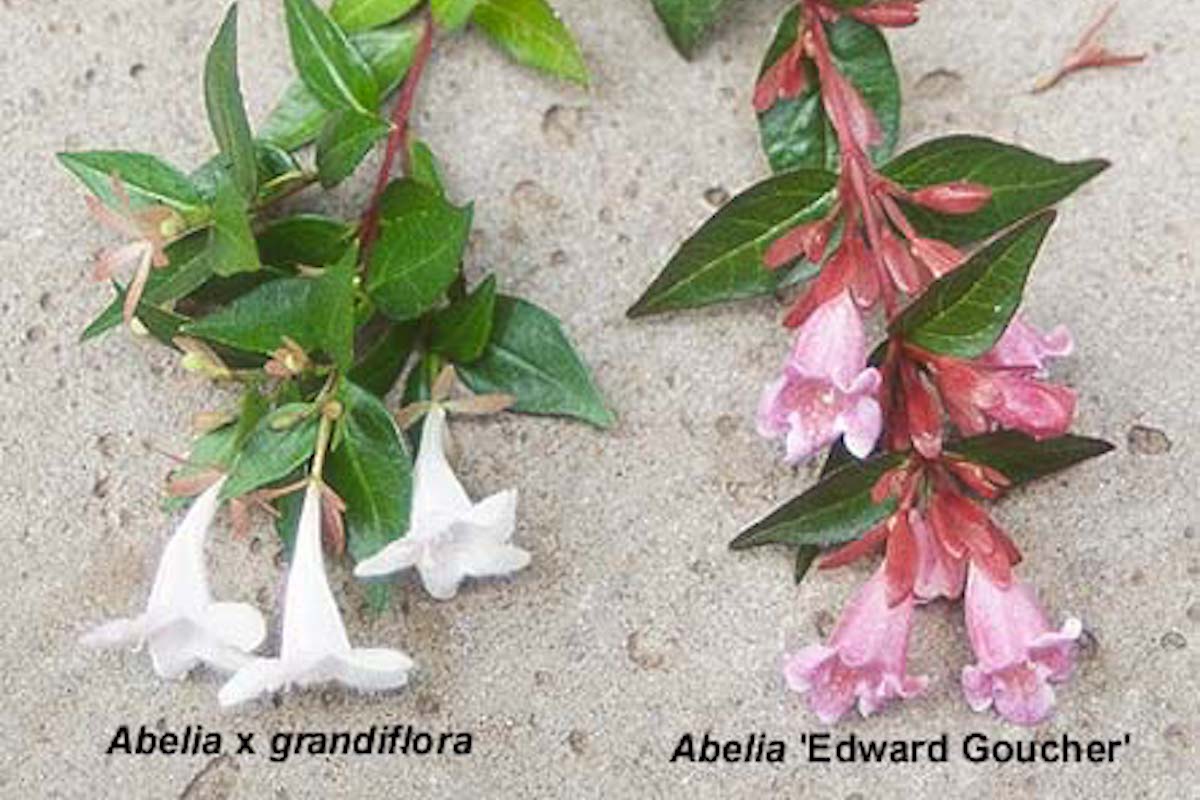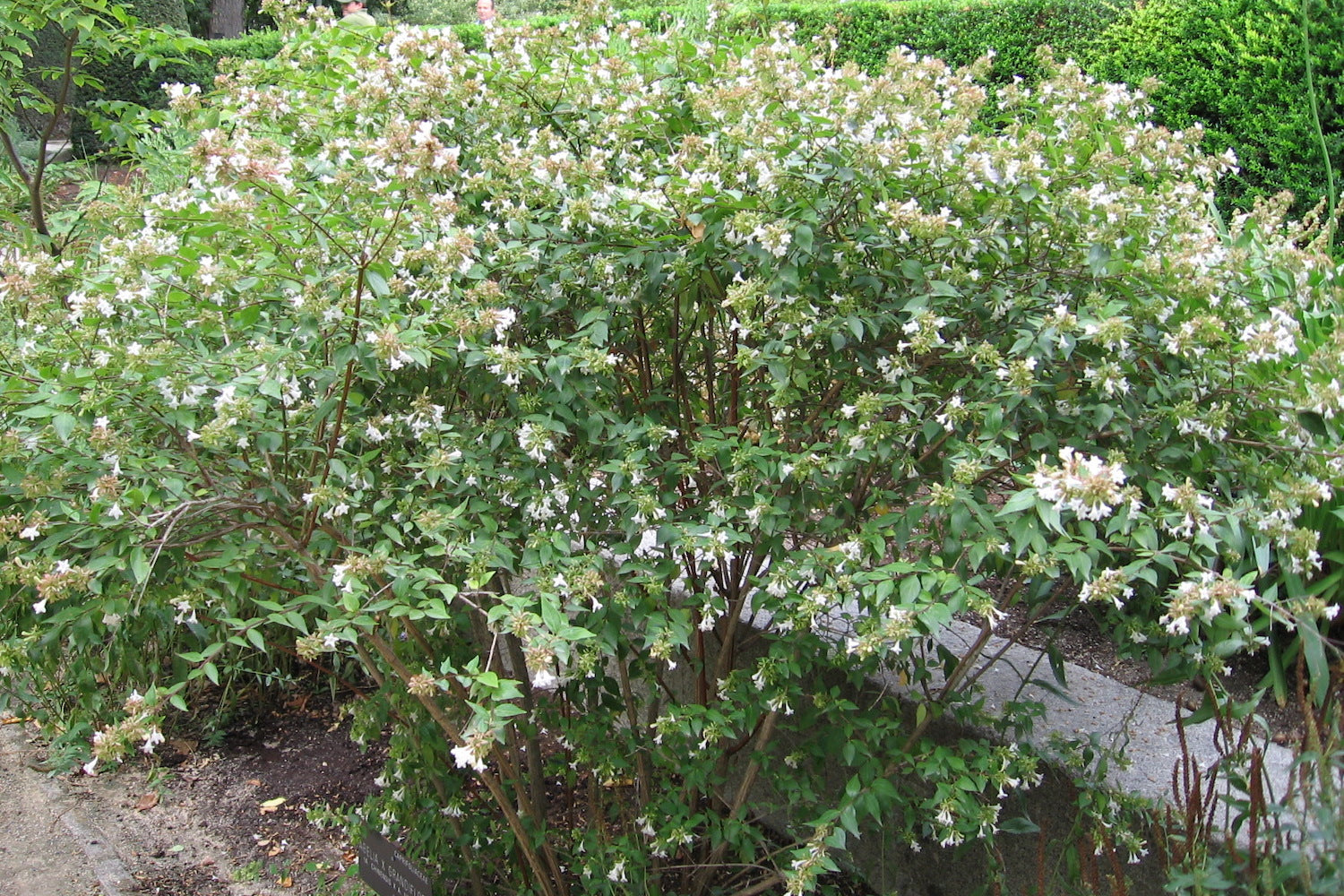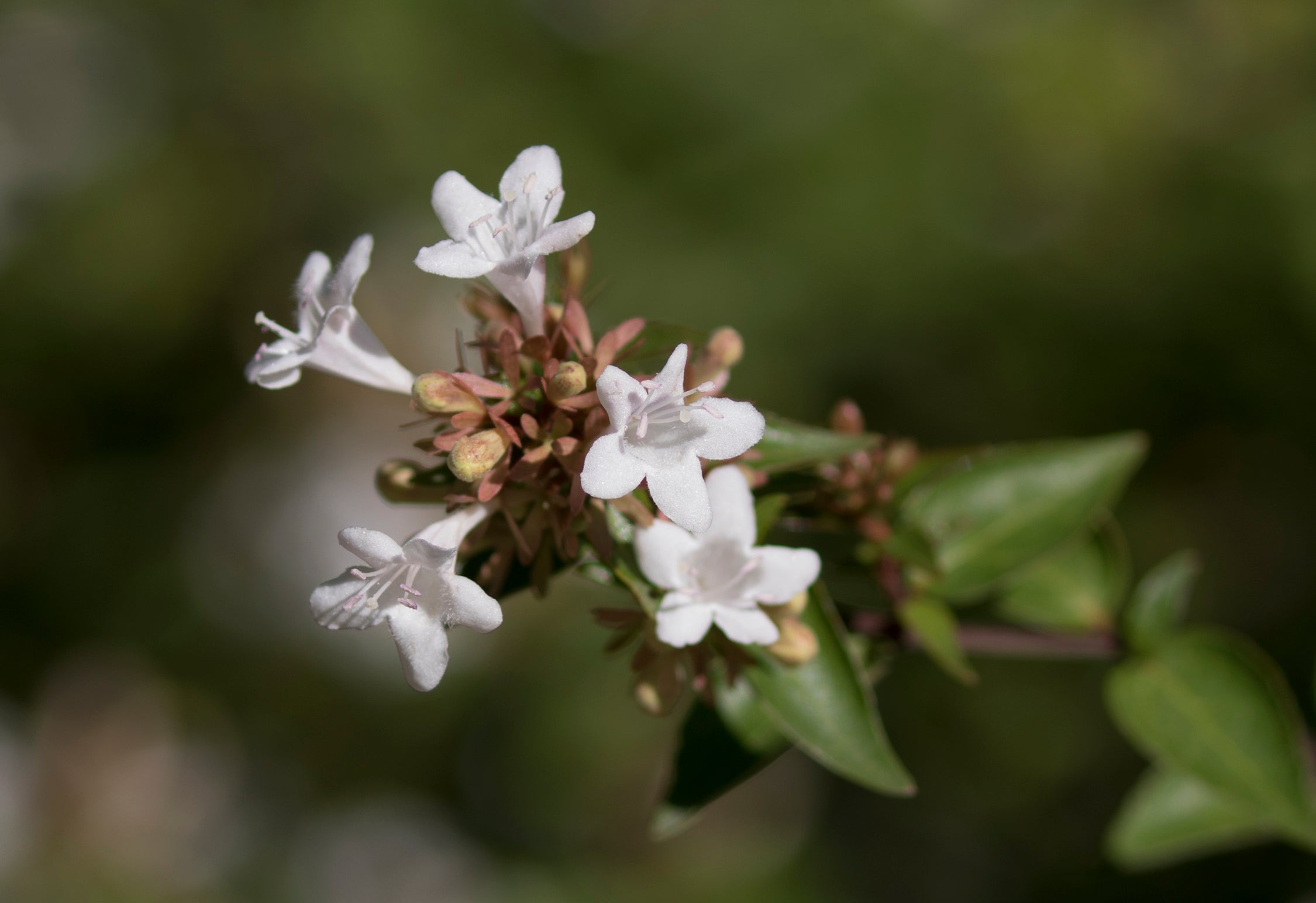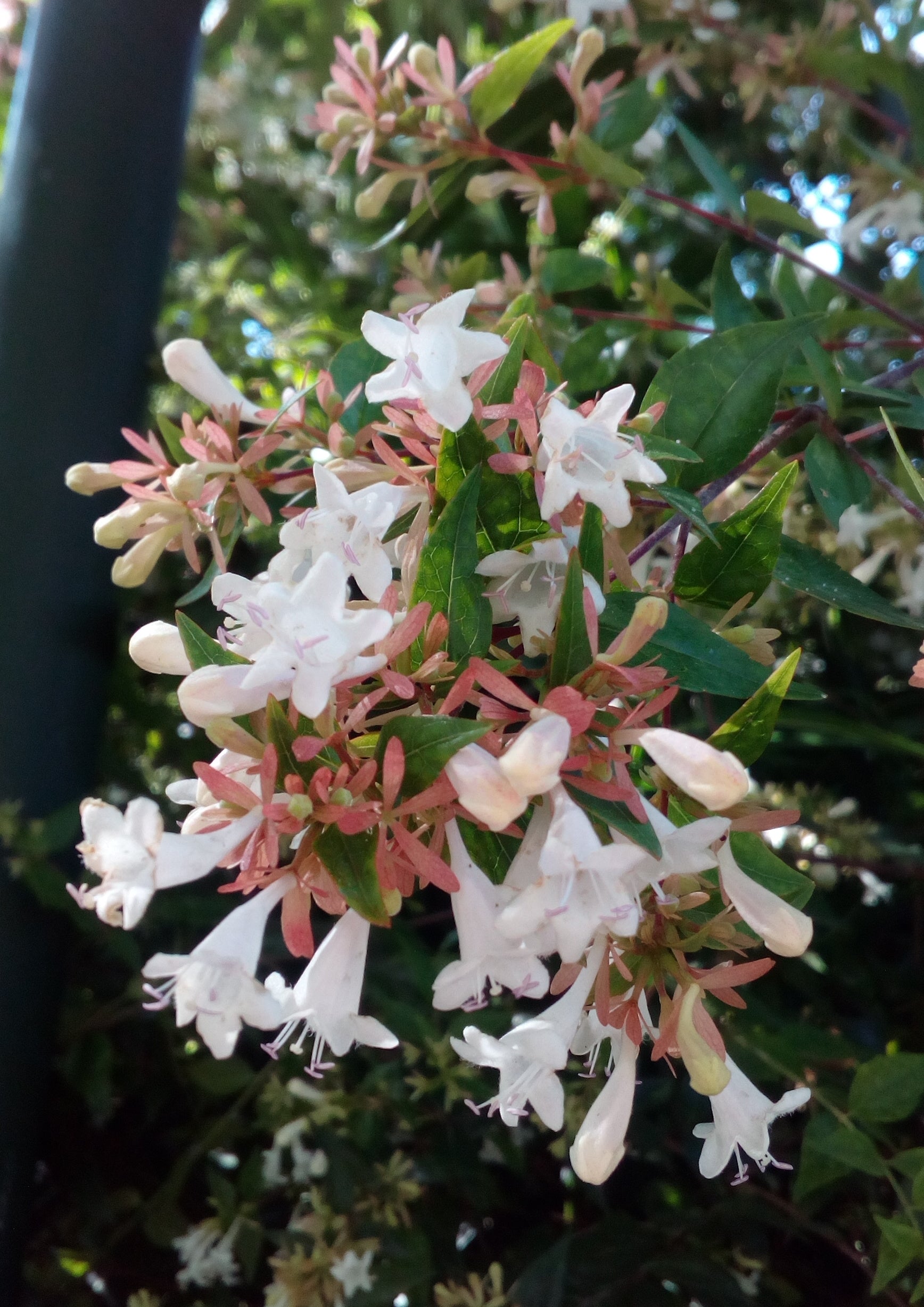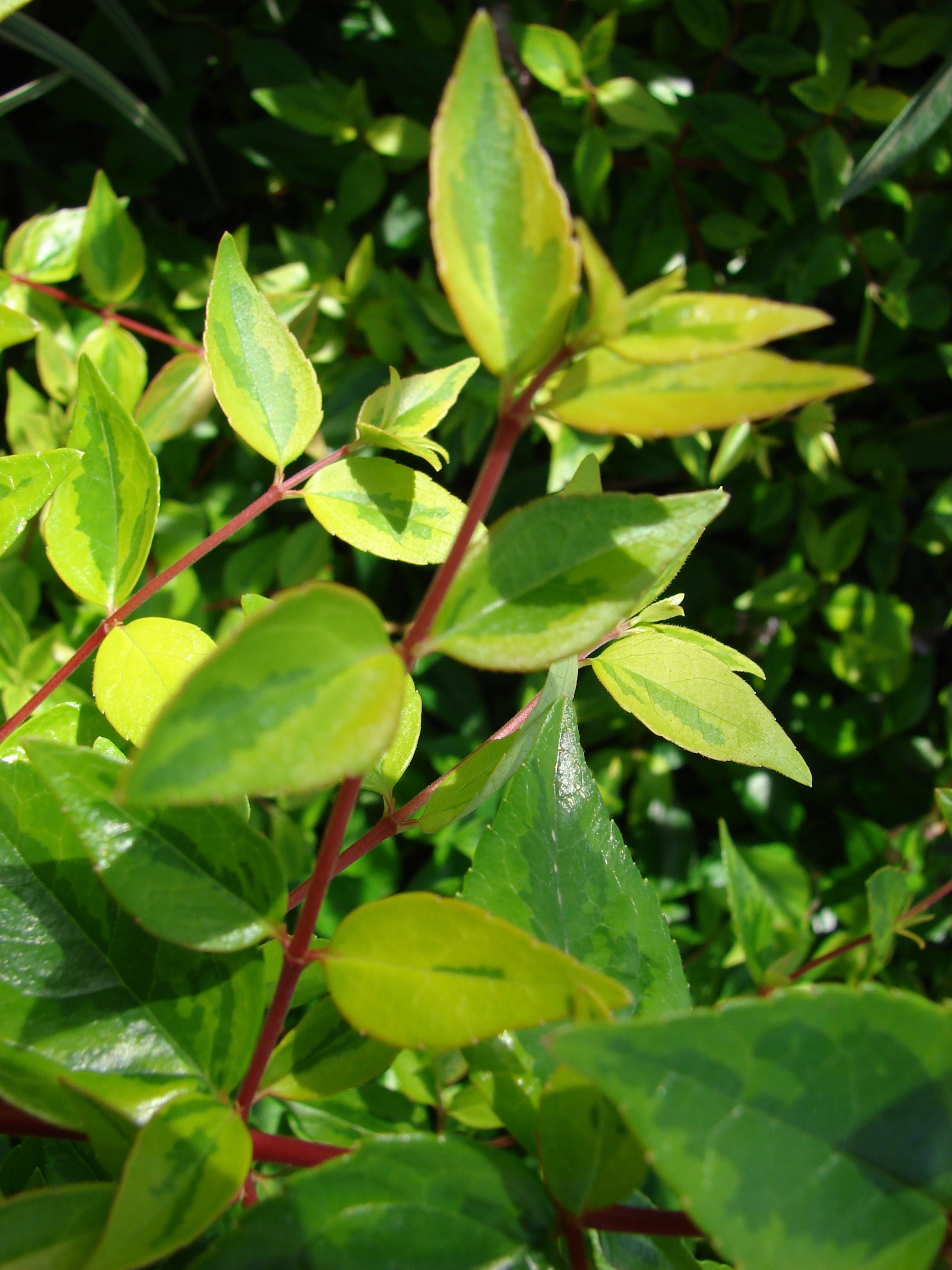Abelia x grandiflora
Approx. 0.5 litre pot
About this cultivar:
Abelia x grandiflora is a cross between A. chinensis and A. uniflora; superior to its parents in both its wealth of flowers and their prominence! The specific epithet means large flowered.
The pale pale pink flowers are carried prodigiously all through high summer and into the late part of the season. As the corollas drop, they leave behind their brownish calyces, which continue the effect of abundance into autumn. Only a hard winter can make it drop its leaves, as privet sometimes does.
- Position: Full sun, partial shade (better in full sun)
- Soil: Almost any soil - Grows well in Ballyrobert
-
Flowers: June, July, August, September, October
- Other features: Bees, Butterflies, and Bugs
- Hardiness: Fully Hardy - Grows well in Ballyrobert, H5 - Hardy in most places throughout the UK even in severe winters (-15 to -10°C)
- Habit: Bushy
- Foliage: Evergreen
- Height: 250 to 400 cm ( 8.2 - 13.2 ft)
- Spread: 250 to 400 cm ( 8.2 - 13.2 ft)
- Time to full growth: 10 to 20 years
- Plant type: Herbaceous Perennial, Shrub
- Colour: Pink, white, green
- Goes well with: Wall, Fence
About this genus:
Abelia is a genus of about 30 species and many hybrids in the honeysuckle family Caprifoliaceae. They are shrubs from 1–6 m tall, native to eastern Asia and Mexico; the species from warm climates are evergreen, and colder climate species deciduous. The leaves often turn purplish-bronze to red in autumn in the deciduous species. The flowers are pendulous, white to pink, bell-shaped, and usually scented. Flowering continues over a long and continuous period from late spring to autumn- the main selling point!
The genus name commemorates Clarke Abel, a keen naturalist who accompanied Lord Amherst's unsuccessful embassy to China in 1816 as surgeon, under the sponsorship of Sir Joseph Banks. All of Abel's seeds and plants were lost in a shipwreck on the homeward voyage, however; living plants of Abelia chinensis were first imported to England in 1844 by Robert Fortune, who introduced A. uniflora the following year. The showy semi-hardy Mexican A. floribunda of the Cordillera of Oaxaca was introduced to English horticulture in 1841.
Abelia have a reputation of not being hardy but it really depends on the species. But, just in case, keep it in a sheltered spot. They are great for a sunny spot and will grow in most soils.


